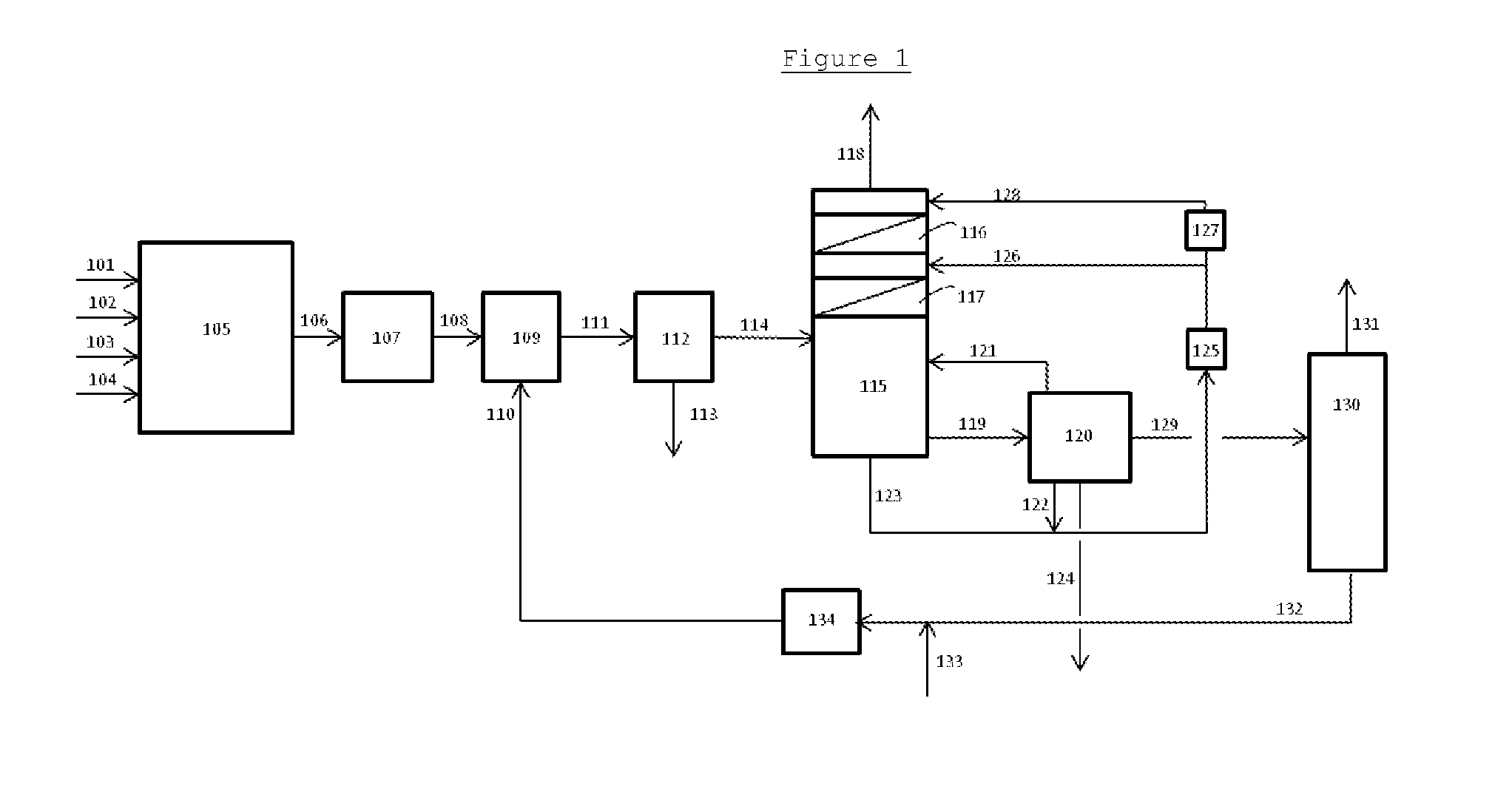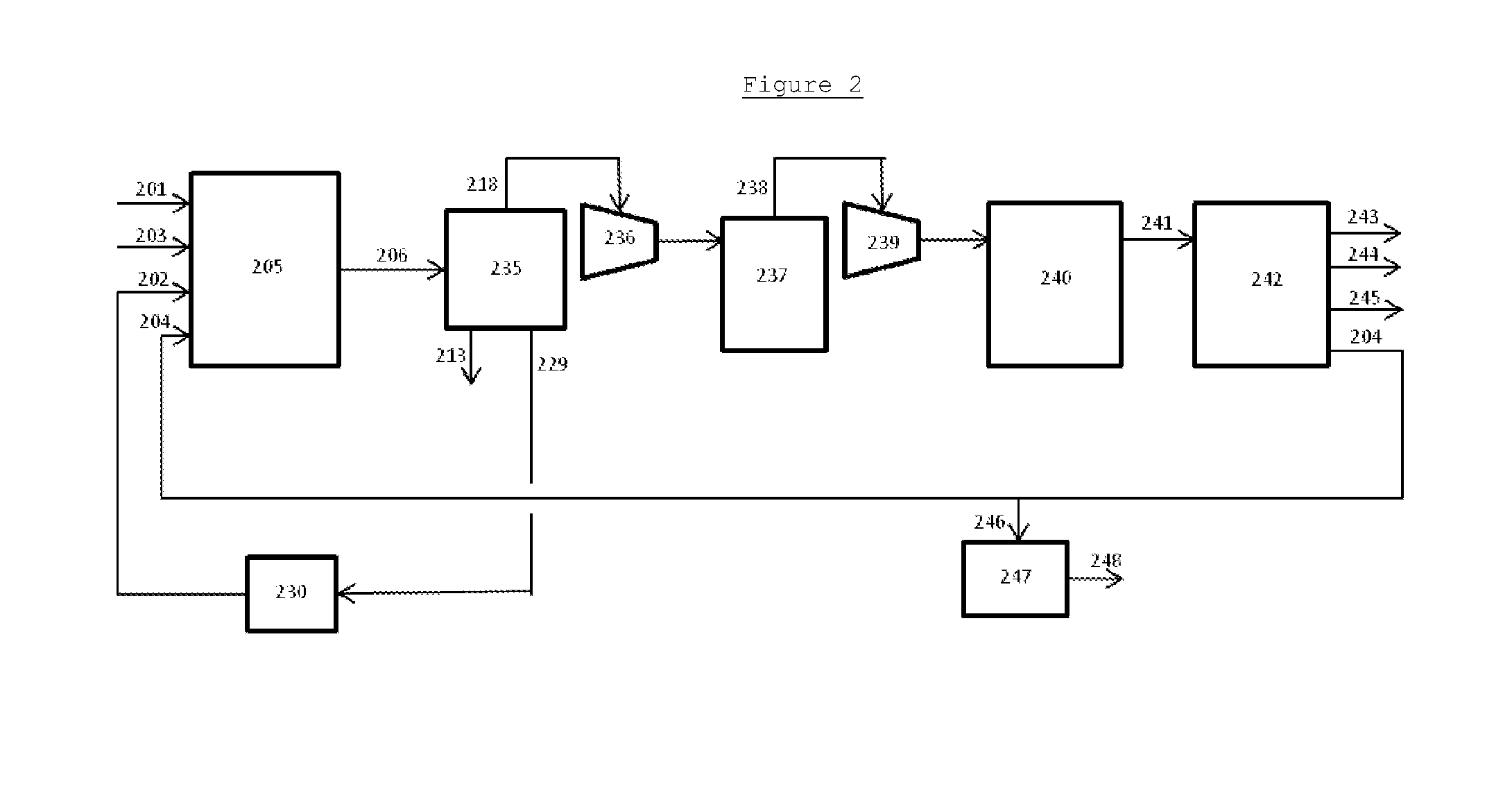Processes for the preparation of an olefinic product
- Summary
- Abstract
- Description
- Claims
- Application Information
AI Technical Summary
Benefits of technology
Problems solved by technology
Method used
Image
Examples
Embodiment Construction
[0015]The present invention addresses the problems indicated by subjecting the reaction effluent stream to a direct quench with an aqueous liquid after initial cooling in one or more heat exchangers. The direct quench rapidly cools the reaction effluent stream and precipitates the solids at the same time. The solids-containing liquid phase can then be separated and removed from the process. The remaining gaseous material is subjected to further cooling and separation in a quench tower downstream of the quench section.
[0016]Since the solids-containing liquid phase is removed from the process, the downstream conduits and equipment can be designed more freely as there is not a solids issue to deal with. For example, the conduit between the direct quench step and any further equipment can have a lower velocity or be directed in an upward direction if desired without concern for solids or fouling.
[0017]In addition, since a large part of the cooling is carried out in the direct quench ste...
PUM
| Property | Measurement | Unit |
|---|---|---|
| Temperature | aaaaa | aaaaa |
| Temperature | aaaaa | aaaaa |
| Temperature | aaaaa | aaaaa |
Abstract
Description
Claims
Application Information
 Login to View More
Login to View More - R&D Engineer
- R&D Manager
- IP Professional
- Industry Leading Data Capabilities
- Powerful AI technology
- Patent DNA Extraction
Browse by: Latest US Patents, China's latest patents, Technical Efficacy Thesaurus, Application Domain, Technology Topic, Popular Technical Reports.
© 2024 PatSnap. All rights reserved.Legal|Privacy policy|Modern Slavery Act Transparency Statement|Sitemap|About US| Contact US: help@patsnap.com










